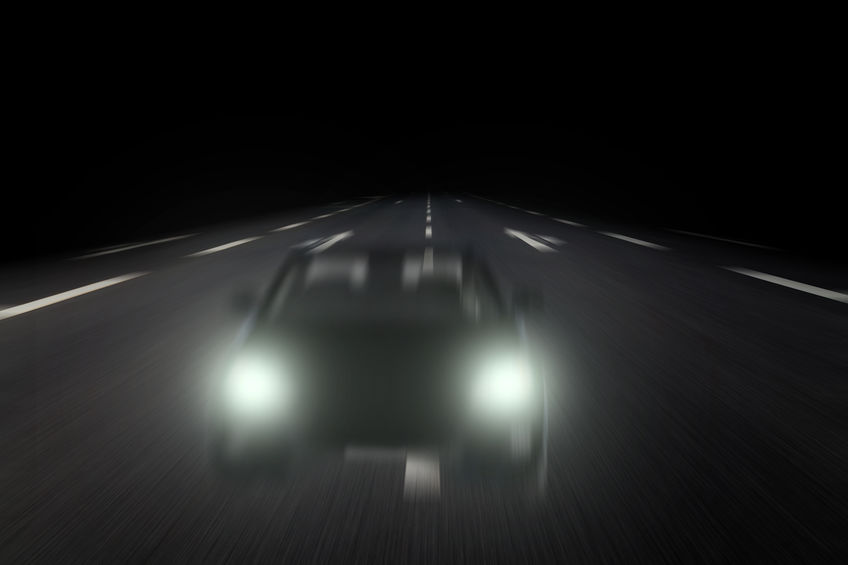The Rights of Wrong-Way Crash Victims
October 11, 2019 | Category: Automobile Accidents | ShareOn September 16, 2019, NBC2 News reported on a wrong-way accident on the Cape Coral Bridge that happened on September 1. A camera caught a driver making an illegal U-turn on a Cape Coral Bridge exit ramp, just before the toll booth. Not only did the wrong-way car nearly sideswipe a car coming toward it, but a surveillance video also showed the same driver later crashing into another driver.
 "The axle, the suspension, the tire, and the frame were all bent... so the initial impact pretty much did a good number on my truck. I would have liked to get his license plate or something to make sure he was okay, but he kept going,” said the truck driver.
"The axle, the suspension, the tire, and the frame were all bent... so the initial impact pretty much did a good number on my truck. I would have liked to get his license plate or something to make sure he was okay, but he kept going,” said the truck driver.
The National Traffic Safety Board (NTSB) investigated wrong-way accidents on highways and access ramps. The conclusions of the report were:
- Although they are relatively rare highway occurrences, wrong-way collisions tend to be severe events resulting in fatalities, and the number of fatalities, averaging over 300 per year, has remained essentially unchanged in recent years.
- Wrong-way collisions occur most often at night and during the weekends; they also tend to take place in the lane closest to the median.
- Driving while impaired by alcohol is the primary cause of wrong-way driving collisions; more than 60 percent of wrong-way collisions are caused by drivers impaired by alcohol.
- Alcohol impairment continues to be present in about one-third of all fatal highway accidents, resulting in more than 10,000 deaths per year.
- New countermeasures to alcohol-impaired driving, as well as renewed emphasis at the federal, state, and local level, are needed.
- The installation of alcohol ignition interlocks on the vehicles of all driving while intoxicated (DWI) offenders would reduce accidents caused by alcohol-impaired drivers.
- The Driver Alcohol Detection System for Safety (DADSS) program is working to solve both technical and practical challenges to make it an acceptable alcohol detection system for widespread implementation in the U.S. vehicle fleet.
- Given that older drivers are over-represented in wrong-way collisions, efforts are needed to reduce the involvement of older drivers in wrong-way collisions.
- Available data are inadequate to determine the extent of drug involvement in wrong-way driving.
- Based on state sign inventory results and investigative examples, controlled-access highway exit ramp signs, in some locations, are not sized and placed in compliance with the current Federal Highway Administration Manual on Uniform Traffic Control Devices.
- To reduce wrong-way errors, traffic control devices should be designed to make exit ramps readily distinguishable from entrance ramps; to some extent, this can be achieved by addressing signage, roadway marking, and roadway lighting.
- Interchange design can influence the likelihood of wrong-way incursions, and states have experience with design changes that have proven effective in reducing wrong-way movements.
- Individual state efforts have identified effective wrong-way driving countermeasures, but there is limited federal guidance for the use of proven strategies to prevent wrong-way driving.
- Wrong-way monitoring programs provide an effective means of identifying wrong-way collision trends.
- Most of the methods available to stop a wrong-way vehicle involve a high degree of risk and may put law enforcement officers and other motorists in jeopardy.
- Providing navigation system alerts that inform drivers of wrong-way movements onto controlled-access highway exit ramps before they reach mainline traffic could enhance safety.
- For wrong-way navigation alert systems to be reliable and effective, global positioning system (GPS) providers must follow consistent human factors policies in messaging alerts.
“When drivers are injured or suffer vehicle damage as the result of a wrong-way driver who leaves the scene, they may be entitled to compensation through their uninsured motorist coverage. Insurance companies in Florida that sell automobile insurance are required to offer people uninsured and underinsured motorist coverage. Even if the driver who hit you or a family member does not have insurance, or has little insurance coverage, you may be entitled to compensation under your own personal automobile insurance policy or the insurance policy of a family member. You also may be entitled to compensation from a relative's insurance policy. These alternatives exist under Florida law precisely to deal with circumstances such as these, where the driver who caused the accident has insufficient or no insurance coverage, or where the driver to blame cannot be identified for various reasons,” said Fort Myers Uninsured Motorist Lawyer Randall Spivey of Spivey Law Firm, Personal Injury Attorneys, P.A.
“We have an experienced legal team available to assist you if you are injured in a wrong-way accident. After seeking medical attention, please contact us 24/7,” said Attorney Spivey.
Fort Myers Uninsured Motorist Lawyer Randall L. Spivey is a Board Certified Trial Attorney – the highest recognition for competence bestowed by the Florida Bar and a distinction earned by just one (1%) percent of Florida attorneys. He has handled over 2,000 personal injury and wrongful death cases throughout Florida. For a free and confidential consultation to discuss your legal rights, contact the Spivey Law Firm, Personal Injury Attorneys, P.A., in Lee County at 239.337.7483 or toll free at 1.888.477.4839, or by email to Randall@SpiveyLaw.com. Visit SpiveyLaw.com for more information. You can contact Spivey Law Firm, Personal Injury Attorneys, P.A. in Charlotte County at 941.764.7748 and in Collier County 239.793.77

